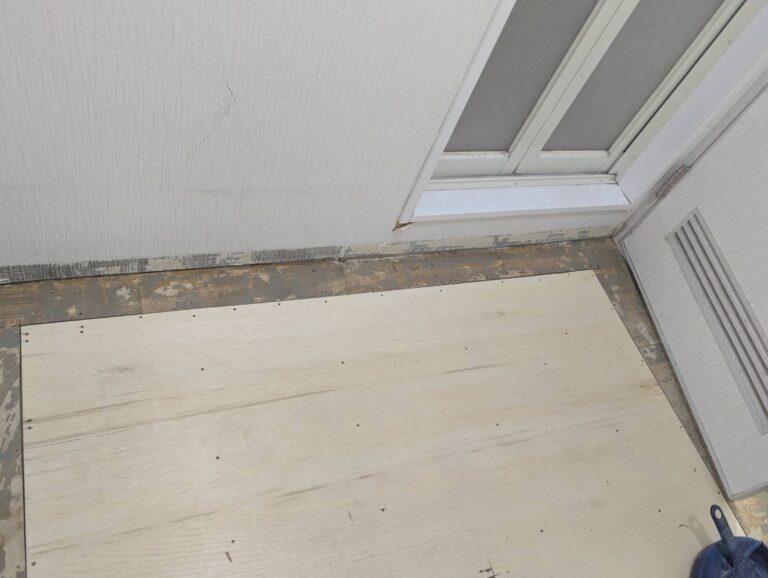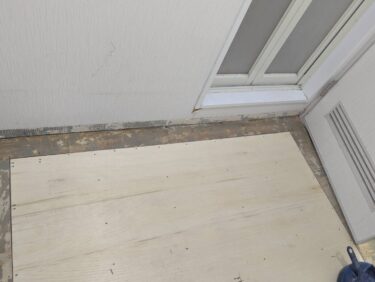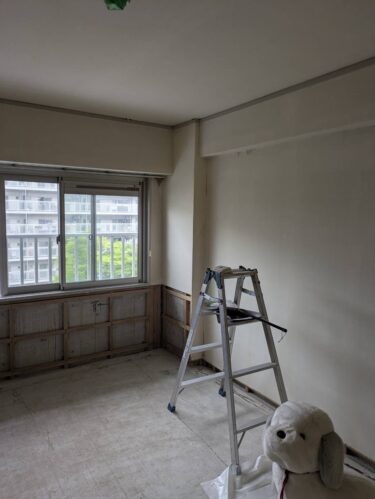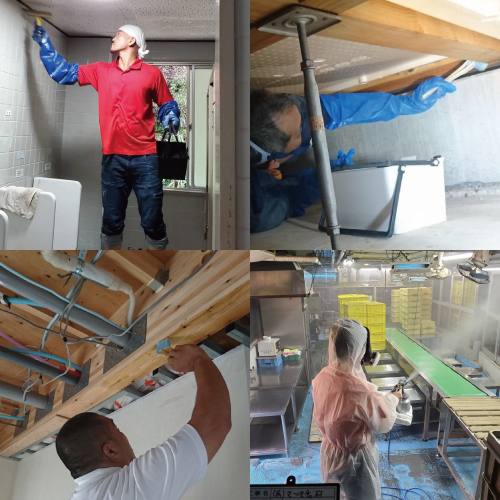Japan’s combination of high humidity and airtight housing has caused serious mold problems in homes for diplomats and foreign expatriates, as well as in official residences. This article summarizes the health risks and impact on asset value that arise from poor housing management, and provides an easy-to-understand explanation of effective countermeasures. By knowing everything from how to manage ventilation and humidity yourself, to when to ask a professional, to maintenance standards at the official residence and prime minister’s residence level, you will be able to create a safe and secure living environment.
1. The Reality of Mold Problems in Diplomatic and Foreign Resident Housing
Foreign diplomats and expatriates living in Japan often reside in high-end or official residences. Yet, even these accommodations increasingly face mold problems. Japan’s humid climate—especially during the rainy season and summer—promotes mold growth, which damages interiors and harms occupants’ health. To many foreigners used to drier, stone-based housing, Japanese homes’ susceptibility to dampness comes as a shock, often leading to delayed response and serious issues.
1.1. High Humidity & Cultural Gaps in Japanese Homes
Japan’s climate features months of 80%+ humidity. In contrast, diplomats from drier regions often underestimate the need for humidity control in Japanese residences. They assume homes are naturally damp-proof as in their home countries, leading to insufficient initial measures and serious mold outbreaks.
1.2. Health Impact Cases in Affluent Neighborhoods
Even luxury apartments in Tokyo, Yokohama, and Kobe frequently report mold issues. Basements and north-facing rooms often have poor ventilation and condensation, hosting black and white mold. In one case, a diplomat’s child suffered chronic cough and nasal congestion, diagnosed as mold-induced allergy, prompting discovery of mold in the home.
2. Why High-Tightness (“High Cavity”) Homes Attract Complaints
The push for energy efficiency has led to high-tightness homes sealed against outside air. While this ensures insulation, it traps moisture inside. Inadequate ventilation and pressure imbalances lead to condensation and mold behind walls and in hidden spaces, triggering numerous complaints.
2.1. Moisture Retention in Airtight Homes
Airtight design keeps internal air from escaping. Everyday activities like cooking, showering, and even breathing generate humidity. With no escape path, moisture accumulates, breeding mold in unseen areas like behind walls and ceilings.
2.2. Ventilation Failures & Pressure-Induced Condensation
Though mechanical ventilation systems are legally required, many residents misuse or disable them—especially in winter. Pressure differentials may draw moist air into hidden cavities, where it condenses and fosters mold, leading to airborne spores and health risks.
3. Mold Control Standards Required in Official Residences
Government-owned residences—used by diplomats and high officials—demand higher standards. Mold presence can harm health and damage the nation’s image. Therefore, these homes need strict hygiene criteria, routine inspections, and professional maintenance.
3.1. Health & Asset Value: Removal Standards
Mold threatens health and degrades property value. Officials hosting dignitaries must ensure air purity, preventing allergic reactions and structural decay. Clear mold-removal criteria and scheduled maintenance are essential for institutional residences.
3.2. Maintenance & Periodic Inspection Necessity
Mold commonly returns unless conditions are remedied. Older official buildings—especially with suboptimal ventilation—require thorough, frequent inspections, including hidden spaces. Technicians must be trained in modern mold-removal methods.
4. Mold Removal: DIY vs Professional Services
Upon spotting mold, many attempt cleaning themselves. But improper DIY can worsen the problem. This section contrasts safe home-based cleanup with professional remediation, detailing each method’s pros and cons.
4.1. Safe DIY Initial Response
Minor mold on visible surfaces can often be removed with store-bought cleaners or alcohol. Proper safety—gloves, masks, ventilation—is crucial. After cleaning, full drying prevents recurrence. However, hidden mold and extensive infestation demand professional help.
4.2. Professional Remediation & Prevention Technologies
Experts conduct thorough mold assessments, reaching interior structures and using specialized methods like Myco-Tech or MIST to eradicate mold at the root. They apply anti-mold treatments afterward, ensuring long-term prevention. While more expensive initially, this approach is cost-effective over time due to reduced health and structural risks.
5. Mold Prevention Tips for Airtight Homes
Airtight homes need special strategies—early awareness, planned habits, and technical measures can significantly reduce mold risk.
5.1. Proper Ventilation System Installation & Maintenance
Mechanical ventilation, legally mandated in airtight homes, needs regular filter cleaning and functional checks. Operate fans during cooking or bathing, and arrange furniture to allow airflow.
5.2. Humidity Control & Condensation Prevention
Keep indoor humidity below 50–60% using hygrometers, dehumidifiers, and air conditioners. Employ explain condensation control by choosing insulated windows and ensuring airflow behind curtains. Always wipe away visible condensation quickly.
6. Cutting‑Edge Tech and Material Choices for Prevention
Mold prevention begins at design. Anti‑mold materials, coatings, and advanced air and humidity control systems can greatly enhance a home’s resilience.
6.1. Benefits of Anti‑Mold Paints & Building Materials
Products with built‑in anti‑mold properties for walls, floors, and ceilings inhibit fungal growth and simplify cleaning. Especially in bathrooms or closets, these materials reduce maintenance needs and improve hygiene.
6.2. Selecting Air‑Conditioners, Dehumidifiers & Purifiers
Modern devices include humidity sensors, HEPA filters, and air‑sterilizing technologies. Choose models suited to room size and moisture levels. Maintain filters regularly for optimal performance.
7. Everyday Habits to Reduce Mold Risk
Even with top-tier construction, daily living habits strongly influence mold proliferation. Simple, consistent actions go a long way toward prevention.
7.1. Smart Furniture Arrangement & Airflow
Furniture placed flush to walls restricts airflow and invites moisture buildup. Leave several centimeters of space from exterior walls, ventilate closets, and reduce clutter inside cabinets to improve circulation.
7.2. Moisture Management in Kitchens & Bathrooms
Always ventilate after showering or cooking—open windows and run exhaust fans. After baths, rinse shower walls with cold water and use towels to dry surfaces. Clean and air out under-sink and drain areas frequently.
8. When to Call Mold Experts: Judging the Right Time
Home cleaning may not suffice in persistent or severe cases. Prompt expert intervention can prevent health threats and further damage.
8.1. Signs of Health Impact or Widespread Infestation
If household members experience persistent cough, allergies, or fatigue, suspect mold—even without visible spots. Foul odors or discoloration behind walls or floors also warrant inspection.
8.2. When Building Flaws or Construction Errors Are to Blame
Structural issues—poor insulation, neglected ventilation, or installation errors—often underlie mold problems. These require expert diagnosis and fixes, not just surface treatment.
9. Case Studies: Diplomat & Airtight Home Mold Incidents
Examining real cases clarifies both the severity of mold issues and the effectiveness of solutions—including the MIST method and integrated remediation.
9.1. Regional Example: Kansai & Tajimi City
In a diplomat’s basement in humid Tajimi, mold devastated stored items due to insulation flaws and ventilation failures. After MIST treatment and anti-mold coating, the damage ceased entirely.
9.2. Successful Remediation in Tokyo High‑End Housing
In a luxury Tokyo home, mold had colonized extensive indoor walls due to design errors. After precise inspection, MIST eradication, ventilation system overhaul, and anti-mold repainting, mold was eliminated and environmental quality restored.
10. Maintaining Results: Operations Plan & Checklist
Mold can recur without ongoing management. A structured maintenance routine keeps homes healthy long-term.
10.1. Routine Inspections & Living Habits Reassessment
Check humidity, ventilation operation, and filter cleanliness biannually. Review usage patterns—open windows regularly and survey seasonal changes.
10.2. Annual Humidity‑Control Schedule
Schedule enhanced dehumidification during rainy season, improve insulation and airflow in winter, and conduct maintenance and material refresh in spring/fall. Monthly checklist items ensure no step is missed.





